- How solar battery storage works
- Introduction to solar battery storage
- Tesla Powerwall battery solutions
- What Do Solar Batteries Look Like – and Where Can I Install Them?
- What Size Solar System Should You Have When Adding a Battery
- What’s the Real ROI on Solar and Battery Systems in 2025?
- When are batteries worth it? Solar energy battery viability.
- Which Solar Battery Is Right for Your Home?
- Does Solar Increase Property Value in Shoalhaven? The Numbers Speak for Themselves
- Empowering Small Businesses with Solar: The Australian Small Business Energy Incentive
- How much will you save with solar?
- How the 2025 Australian Cheaper Home Batteries Program Works
- Solar finance options
- The 2024 NSW Government Home Solar Battery Rebate Scheme
- What government incentives and financing options are available for solar?
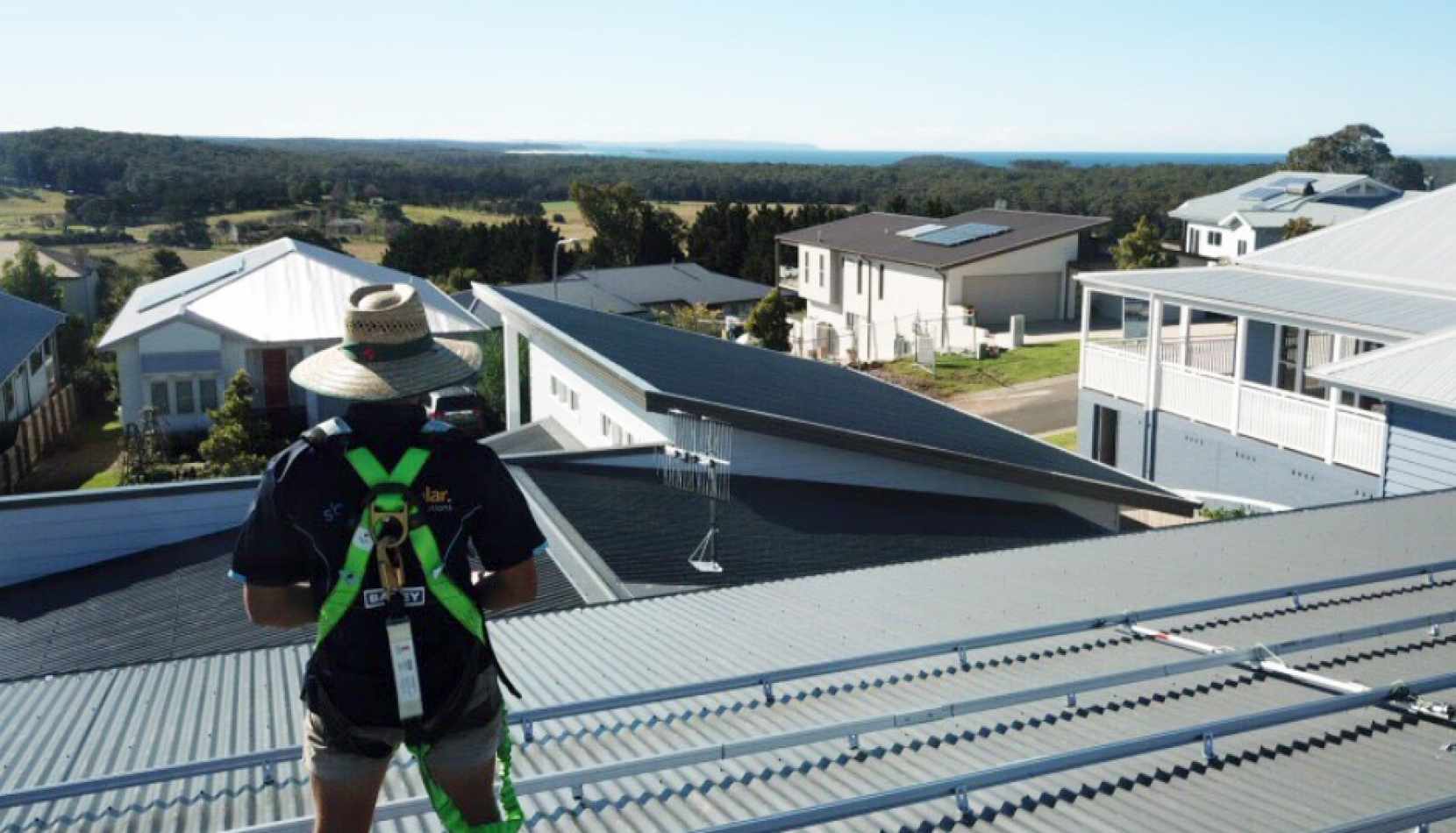
Solar panel installation – how to join the solar revolution at home
Whether it’s for your home or business, installing solar power is a great way to reduce your utility costs. You will also be doing your bit to bring us all one step closer to a cleaner and more sustainable planet.
All over the world, more and more people are switching to solar energy. In Australia, 21% of households have installed solar PV systems. This figure translates to approximately two million Australian homes powered by solar energy.
The combined energy production from household solar panels in Australia exceeds 10 GW. If the rate of solar power adoption is maintained, experts estimate Australia will reach 50% renewables in 2025.
The graph below shows the rate of growth of renewable energy in Australia.
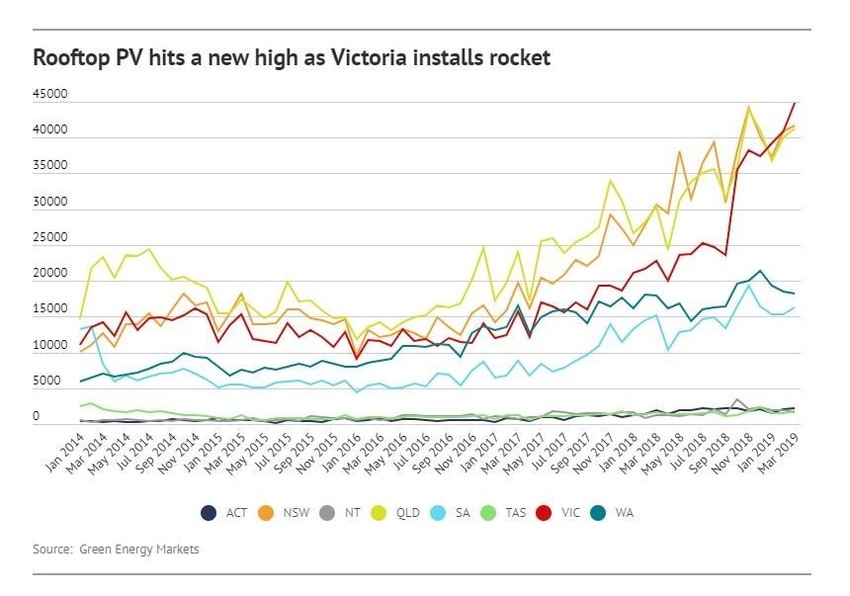
Image Source: WeForum, Green Energy Markets
You too can be part of the renewable energy revolution! Let’s explore what you need to know before you get started.
Reasons to switch to solar power
There are more than one reason why switching to solar power makes sense for homeowners.
Let’s explore the perks of solar-powered homes:
1. Saves you money
Right from the moment you switch on your solar power system, it starts saving you money!
Electricity bills are a major expenditure for homeowners all over Australia.
In Victoria, the average homeowner spends $1490 a year on electricity. In South Australia, electricity spending is even higher, with homeowners paying an average of $1,759 a year.
2. Good for the environment
Using solar energy helps reduce the emission of greenhouse gases. Energy sources such as oil and gas emit greenhouse gases. Greenhouse gases include carbon dioxide, methane, nitrous oxide and fluorinated gases.
These gases allow sunlight to pass through the atmosphere. However, they prevent heat from leaving the earth’s atmosphere. As a result, they trap heat in the Earth’s atmosphere, contributing to global warming.
Many traditional energy sources also pollute the air and water, posing a health risk to communities. When you use clean solar energy, you significantly reduce your carbon footprint.
3. On-grid power consumption savings
If you install an on-grid solar power system, you will use the energy it generates throughout the day. At night, when there’s no sunlight, you will switch over to power from the grid.
This will save on your daytime energy expenditure.
4. Feed-in-tariff credits
Another way a solar power system helps you save is through feed-in-tariffs. If your system produces more energy than you need, the extra power is fed into the grid. You get a credit amount for each kilowatt the grid receives. This reduces your electricity bill even more.
Savings from feed-in-tariffs can be anything from $30 to $200 per quarter.
The amount you’re able to save depends on:
Your power consumption
The amount of power from your solar panelling
Boost the Value of Your Home
If you plan to resell your home, installing PV panels is a great idea. Homebuyers are willing to pay as much as $10 000 more for a property with a solar system installed, understanding that solar panels mean they will save on electricity bills. With a solar system installed, you also save them the cost and hassle of installation.
Additionally, the installation of solar panels offers extra protection to the roof of the building they are mounted on.
5. Earn government incentives
The Australian government offers rebates and incentives to homeowners who install solar panelling systems.
Generally, the incentives provide a discount on solar power products and packages.
The incentives also benefit people who install other renewable energy systems. These systems include wind, hydro or eligible hot water systems.
When you install a solar system, you receive Small-Scale Technology Certificates (STCs). The number of STCs you are awarded depends on the:
Climate region where the system is installed.
Amount of electricity consumption the system reduces.
Amount of renewable energy produced by the system.
You can redeem the value of these STCs by assigning or reselling them. Here are several ways you can benefit from STCs:
Using them to get a discount on the solar panelling system.
Selling them in the open STCs market (prices dictated by market forces).
Selling them through the STCs Clearing House (fixed price of $40 per STC).
The equipment involved in a solar installation
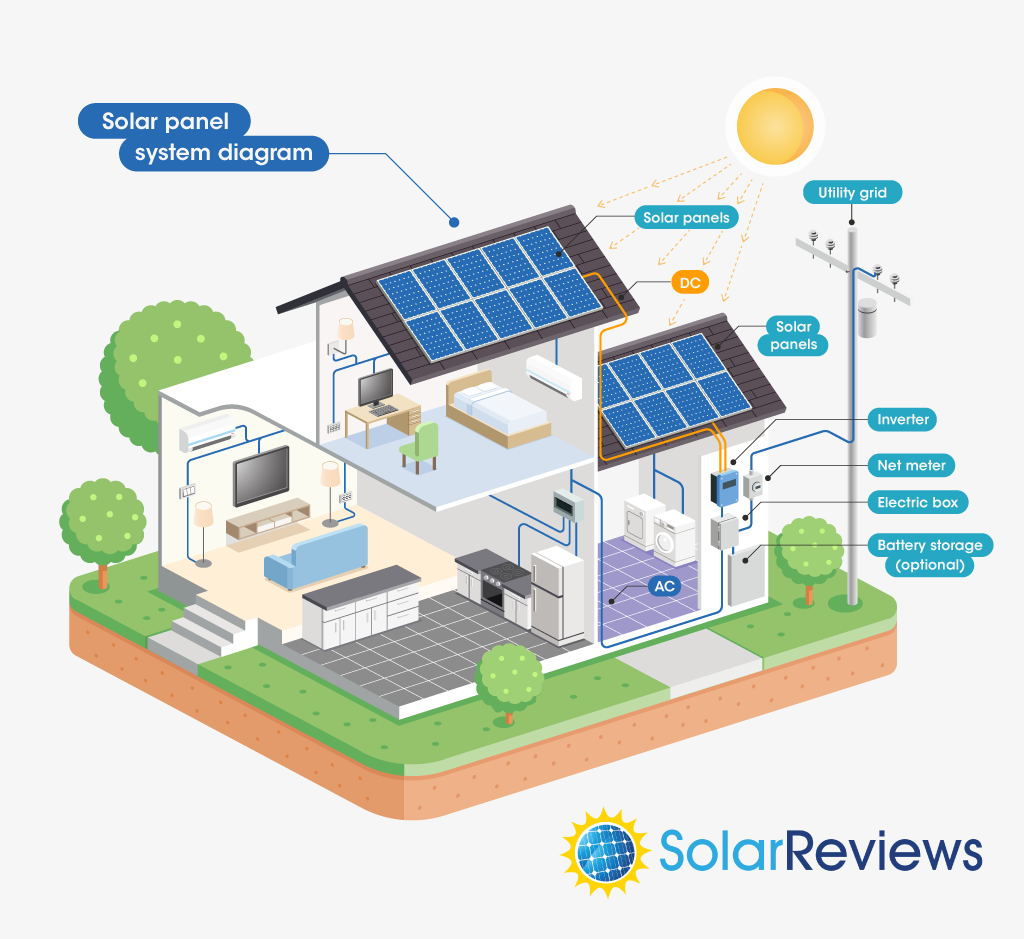
Image Source: Solar Reviews
To utilise solar energy, you need to absorb and convert electromagnetic particles of light into a readily available energy form.
To successfully do so, you require special equipment. This equipment is what makes up your photovoltaic (PV) solar power systems.
Residential solar systems include the following components:
Solar panels
Solar inverter
Solar racking
Solar performance monitoring
Solar storage
Solar panels
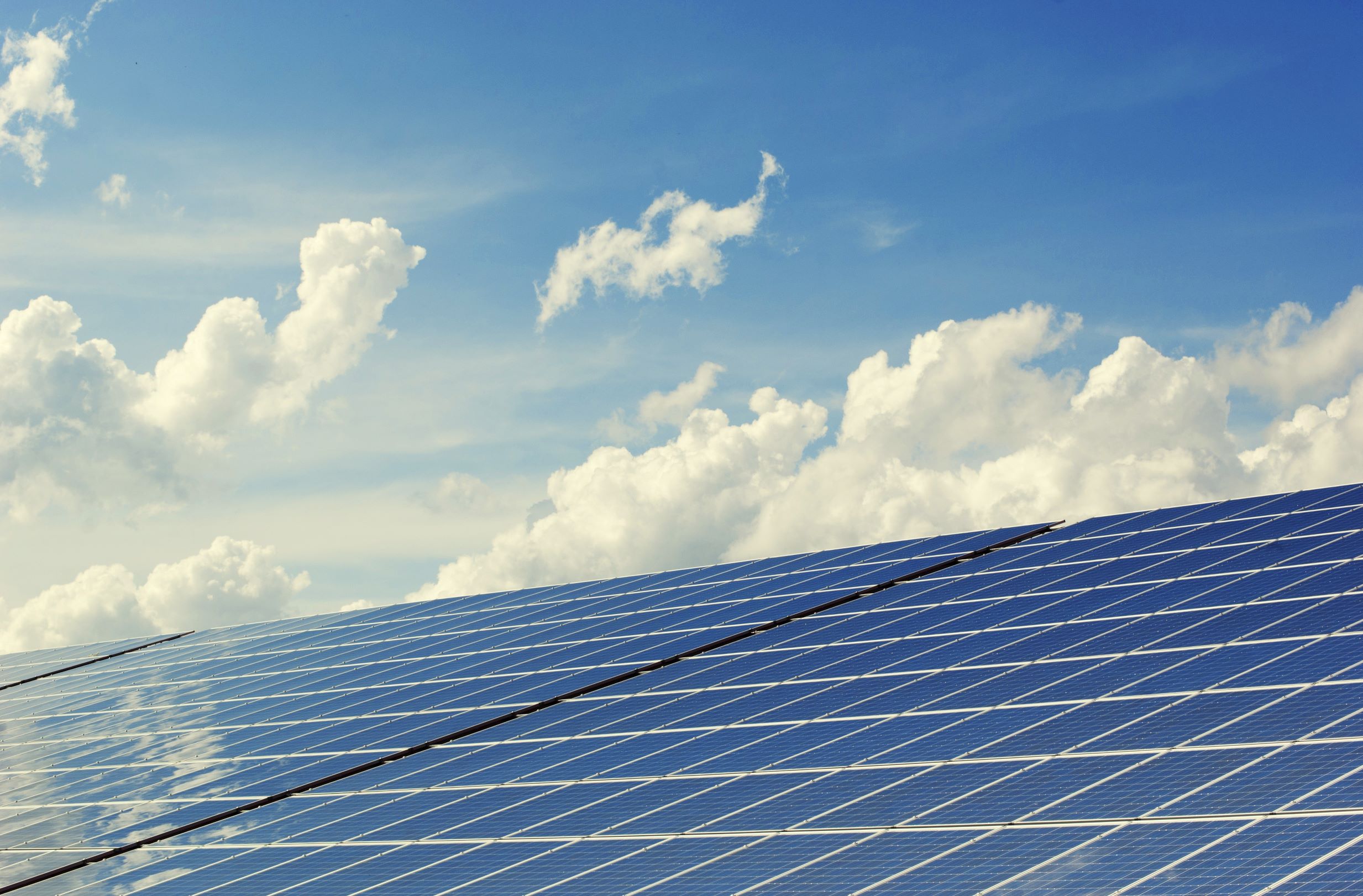
Solar panels are the most conspicuous part of a residential solar system. Usually, the panels are installed on the roof for direct exposure to sunlight.
Photons are particles of light. Solar panels work by enabling photons to break electrons loose from atoms. This process generates electricity.
Solar panels comprise small units called photovoltaic (PV) cells. Photovoltaic means they convert light particles into electricity.
There are two types of solar panels most suitable for residential solar installations:
Monocrystalline panels
Polycrystalline panels
These two types of panels perform similarly. But monocrystalline panels are slightly more efficient and marginally more expensive.
The energy produced by PV panels is rated in watts. The rating on a PV panel is the maximum amount of power it can generate under optimal conditions. Each PV panel can produce anything from 10 and 300 watts. The most common configuration for PV panels is 100 watts.
The number of panels you need and their placement depends on:
Your energy requirements
The climate in your area
The usable roof space
Peak sunlight in your location
Whether net metering is available
Efficiency rating of the panels
A professional solar PV installer will help you calculate the number of panels you need for a cost-effective system.
Solar inverter
A solar inverter converts the direct current (DC) produced by PV panels into alternating current (AC) required for use.
There are three types of inverters:
String/centralised inverters: These inverters are the least expensive. They tend to be less effective if there is shading on the roof.
Microinverters: These inverters are usually more expensive. They’re attached to each panel to allow for optimum operation even in shaded areas.
Power optimisers: These inverters are also attached to each panel. They optimise the DC output of each panel before it goes onto a string inverter for conversion into AC power. Power optimisers are less expensive than microinverters. But they’re slightly more expensive than string inverters.
Solar Racking
Solar panels aren’t mounted to the roof directly. They’re usually mounted on racking systems that are attached to the roof. They can also be mounted on poles in free-standing arrays, or even on the ground.
But roof-mounted systems are the most common. You might be required to use roof-mounting by zoning ordinances. Roof-mounted systems are sleek and efficient.
Rooftop solar arrays are usually installed parallel to the roof with a few inches gap. For optimal performance, solar panels should be mounted on the side of the roof that receives the most sunlight.
Solar storage
Solar battery storage is not just for those living off the grid. Using solar batteries to store extra energy is becoming increasingly popular.
At night when there’s no sunlight, you can use the power stored in your solar battery. This is cheaper than switching to power from the grid at night.
You will also use the stored energy when there’s bad weather or your consumption is higher than production. Simply put, a solar battery gives you more energy independence.
This is how the system works:
Solar panels capture the sun’s radiation.
The inverter then converts it into usable AC electricity.
The excess energy is fed into the grid.
If you have a solar battery, the excess energy is stored for you to continue using at night or when the sun isn’t out.
Solar performance monitoring
To monitor how much electricity your solar PV system is producing, you need a meter. If you don’t have a solar battery, you need a meter to measure the amount of power you feed to the grid. The meter will also measure the electricity used from the grid.
A solar monitoring system is helpful in identifying performance changes.
How PV panels are installed
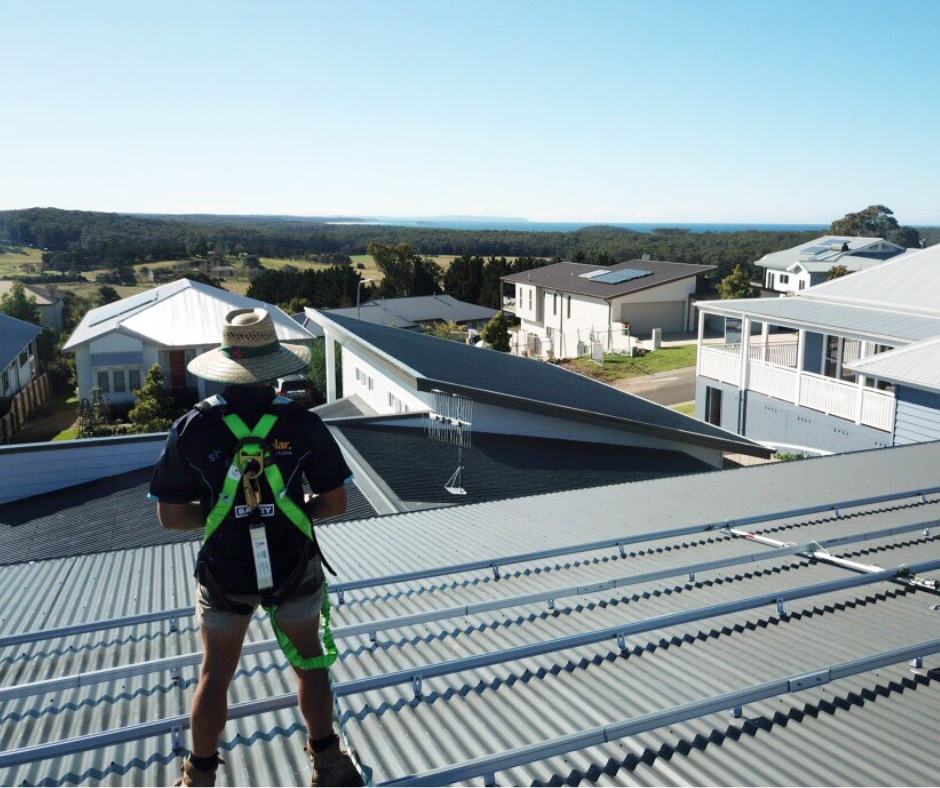
Installation of rooftop solar panels is quite simple. And goes as follows:
Scaffolding set up – The process starts with setting up scaffolding to ensure safety.
Set up a racking system – The next step is to set up the PV panel mounts. They will support the panels and ensure optimum positioning.
Install PV panels – Once the racking system is set up, panels are installed on the structure. The bolts and nuts are tightened to ensure the panels are held securely into place.
Wiring the panels – The next step is to instal electrical wiring. MC4 connectors are preferred in most cases. They’re suitable for all types of PV panels.
Install the solar inverter – The inverter is usually installed near the main panel. Inverters can be installed either indoors or outdoors. They’re more efficient in cooler locations.
Bond inverter and battery – The inverter is connected to the battery storage unit. This enables the storage of extra energy output.
Connect the inverter to the consumer unit – The next step is to connect the inverter to the meter to monitor the system’s performance.
Test the system – The final step is to test if the newly installed PV system is working correctly.
Solar system maintenance
PV panels are relatively low maintenance. Once the installation is done, you won’t have many extra maintenance costs to worry about.
That said, you should inspect the panels a few times per year. Remove any dirt or debris from the panels to keep them operating optimally. You can use a normal garden hose to wash PV panels. For extra cleaning, use a sponge and soapy water to scrub the panels. Don’t use hot water to clean your PV panels.
The best times for cleaning PV panels are:
Early in the morning
In the evening
Avoid splashing water on the panels when they’re hot. This can damage the panels.
Check if the warranty allows for self-cleaning of your PV panels. Some manufacturers might terminate warranty for DIY cleaning.
The installer will examine the system every 4-6 years.
Extra tip: Make sure to ask your installer for specific information about maintaining your PV system.
Buy the best solar system for your home
Do you want to join the clean energy revolution? Look no further than Shoalhaven Solar.
At Shoalhaven Solar, we’ve dedicated ourselves to providing quality solar products.
Our goal is to help our customers become less reliant on electricity from the grid. By doing so, we help each customer to significantly reduce their annual electricity bill.
Shoalhaven Solar offers a minimum 10-year warranty. We also support you for the lifetime of your system.
To get started right away, get a quote online or contact our friendly local team.